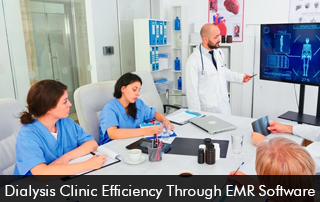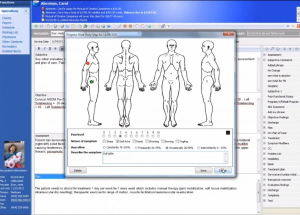Dialysis clinics play a crucial role in the healthcare system, providing life-sustaining treatments for individuals with kidney diseases. As technology continues to advance, the integration of Electronic Medical Record (EMR) software has become a game-changer in enhancing the efficiency of dialysis clinics. In this blog, we’ll explore the benefits of EMR software in simplifying processes, improving patient care, and ultimately, making dialysis clinics more effective in delivering life-saving treatments.
Understanding Dialysis Clinic Challenges
Dialysis clinics face numerous challenges daily, ranging from patient management to documentation and administrative tasks. These challenges can hinder the smooth functioning of the clinic, leading to delays, errors, and increased stress on both healthcare providers and patients.
Patient Management
One of the primary challenges in dialysis clinics is effective patient management. Coordinating schedules, monitoring treatment plans, and keeping track of patient progress can be overwhelming without a centralized system. This often results in miscommunication, scheduling conflicts, and delays in treatment.
Documentation
Maintaining accurate and up-to-date patient records is crucial for providing quality healthcare. In traditional paper-based systems, documentation is time-consuming and prone to errors. Illegible handwriting, missing records, and difficulty accessing information can all contribute to a less-than-optimal healthcare environment.
Administrative Tasks
The administrative workload in dialysis clinics is extensive, involving billing, insurance claims, and inventory management. Without a streamlined system, these tasks can consume a significant amount of time and resources, diverting attention away from patient care.
EMR Software: A Solution to Dialysis Clinic Challenges
EMR software has emerged as a powerful solution to address the challenges faced by dialysis clinics. By digitizing and centralizing patient data, treatment plans, and administrative tasks, EMR software streamlines operations, improves accuracy and enhances overall efficiency.
Enhanced Patient Management
EMR software facilitates efficient patient management by providing a centralized platform for healthcare professionals to access and update patient information in real time. This includes treatment plans, medication schedules, and lab results. With a comprehensive view of each patient’s history, healthcare providers can make more informed decisions and personalize treatment plans accordingly.
Additionally, EMR software allows for easier appointment scheduling and coordination, reducing the likelihood of scheduling conflicts. Patients benefit from a smoother experience, knowing that their appointments are well-managed and that their healthcare team has access to the most current information.
Improved Documentation
Transitioning from paper-based records to EMR software significantly improves the accuracy and accessibility of patient documentation. Healthcare providers can enter data electronically, eliminating the risk of illegible handwriting and reducing the chances of data entry errors.
Moreover, EMR systems often include features such as automated reminders for follow-up appointments, medication refills, and necessary screenings. This proactive approach ensures that patients receive timely and appropriate care, contributing to better health outcomes.
Streamlined Administrative Tasks
EMR software automates many administrative tasks, freeing up valuable time for healthcare providers to focus on patient care. Billing processes become more efficient, reducing the risk of billing errors and delays. The software can also assist in managing insurance claims, ensuring that clinics receive timely reimbursements for services rendered.
Inventory management is another area where EMR software proves invaluable. By tracking medication and equipment usage, clinics can optimize their inventory levels, minimizing waste and ensuring that essential supplies are always available when needed.
Real-World Impact of EMR Software: Case Studies
To illustrate the real-world impact of EMR software on dialysis clinic efficiency, let’s explore a couple of case studies.
Case Study 1: ABC Dialysis Center
ABC Dialysis Center, a medium-sized clinic, implemented EMR software to address its operational challenges. The clinic reported a significant reduction in scheduling errors and improved patient management. With the ability to access patient records seamlessly, healthcare providers experienced enhanced collaboration and coordination.
The implementation of EMR software also streamlined billing processes at ABC Dialysis Center. The clinic reported a 20% reduction in billing errors, leading to faster reimbursement from insurance providers. This not only improved the clinic’s financial health but also allowed staff to focus more on patient care.
Case Study 2: XYZ Nephrology Clinic
XYZ Nephrology Clinic, a larger facility, integrated EMR software to tackle the complexities of managing a high volume of patient data. The clinic saw a notable decrease in documentation errors and a substantial improvement in data accuracy. This contributed to better-informed decision-making by healthcare providers, resulting in more personalized and effective patient care.
The implementation of EMR software also had a positive impact on XYZ Nephrology Clinic’s administrative tasks. The automated billing system reduced the time spent on manual billing processes by 30%, allowing administrative staff to redirect their efforts toward improving overall clinic efficiency.









